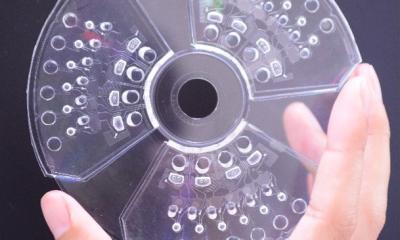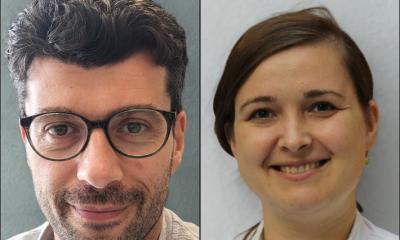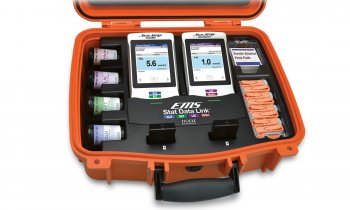© Brolis Sensor Technology
News • Non-invasive testing
Laser sensor to analyse blood without needles
A photonics tech company from Vilnius are on their path to solve the 50-year-old task of making non-invasive blood analysis possible.
With the help of a unique broadband laser-based sensor, the scientists and engineers at Brolis Sensor Technology are able to remotely sense concentration level of main critical blood constituents such as lactate, glucose, urea, ketones or ethanol without drawing any blood. After the regulators approve the technology and it gets fitted into compact devices, people suffering from chronic diseases such as diabetes will no longer need to puncture their fingers numerous times a day to measure their blood glucose level.
Scanning the 'molecular fingerprint'
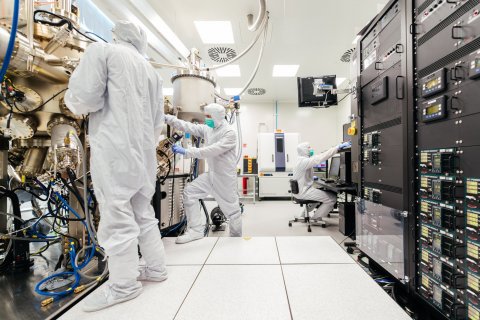
© Brolis Sensor Technology
“We have created a unique laser-based sensor technology that operates in a spectral band which was largely unexplored in the past,” comments Augustinas Vizbaras, the CTO and co-founder of Brolis Sensor Technology. “From when Brolis was founded and we started developing this technology, we were sure that it would be suitable for medical purposes, although there are other important applications outside the medical field. The sensor can be applied in various ways – to see in the dark, to remotely sense gas, for on-site inspections in additive manufacturing processes, for security applications, among other purposes.”
Every molecule, be it lactate or glucose, is made of separate atoms – carbon, oxygen, hydrogen, nitrogen. These atoms have unique geometrical structure. When reacting with its environment, an atom vibrates at characteristic frequencies, which are called molecular fingerprints and can be sensed with laser light.
“Because of molecular fingerprints, we can identify different molecules by measuring these vibrations,” explains Dr Vizbaras. “What is unique about our laser is that it allows analysis from a distance. The laser light is sent to the object, where it interacts with the object and its constituents. The light is then reflected back by means of diffuse reflectance and is collected by the system. Reflected light already carries object-specific information, which is analyzed. By using this method, we can analyze remote objects of different phase – liquid, gas or solid.”
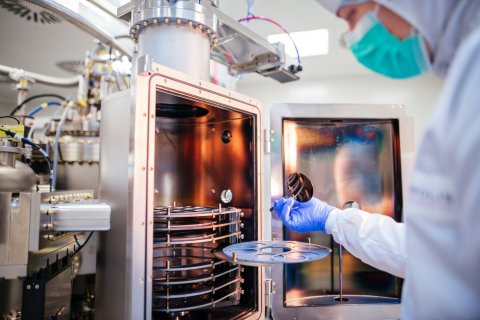
© Brolis Sensor Technology
For a laser to scan molecular fingerprints, it has to have a specific kind of radiation. For this reason, the company has created a laser technology that allows to rapidly change the emission wavelength of the laser across a wide spectral band. “When analyzing blood, or other liquid phase media, one needs a very widely tunable laser as liquids possess very broad molecular fingerprint absorption bands due to so-called collisional broadening,” adds Dr Vizbaras. “One way to achieve this is to use a hundred lasers at the same time, but it wouldn’t be commercially viable. Our sensor is a single device that replaces the need for that many lasers.”
To begin with, Brolis Sensor Technology has innovated a semiconductor optical amplifier with an extremely broad gain-bandwidth. This chip is then embedded into an external cavity circuit, realized using photonic integrated circuit technology, forming an ultra-compact all-semiconductor system-on-a-chip. “Our innovation of the semiconductor technology was the cornerstone for creating the sensor,” says Dr Vizbaras. “It is the breakthrough that we have built the device around.”
Recommended article
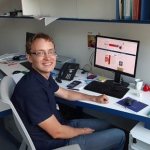
News • Advanced chemistry
Enhancing sensors that could help cure Alzheimer's and Diabetes
Viscosity sensors are used by scientists fighting various diseases, such as Alzheimer's and Diabetes. Vilnius-based chemist Aurimas Vyšniauskas has enhanced their measuring capabilities. This breakthrough will equip researchers with additional tools to study living cells and how they change in a sick organism.
The laser developers have then discussed their innovation with the scientists from the Lithuanian University of Health Sciences to understand which molecules they should concentrate their analysis efforts on. After extensive deliberations, it was decided to focus on analyzing glucose, lactates, ethanol, and urea.
There are already fully-functioning prototypes of the sensor, and the company aims to introduce them to the market in three or four years. Since it is a medical device, it has to go through extensive testing and comply with legal regulations of the US and the EU institutions.
Even though Brolis Sensor Technology are first implementing their sensors in the medical field, these devices will be applicable in other areas, too. “Later on, we are planning on adapting the device to measure lactates, which would be useful for everyone doing sports. The sensor could be attached to any smartwatch,” elaborates Dr Vizbaras. “Also, the sensors could be used to test blood alcohol levels via a fingerprint scan, or even partly replace common blood tests.”
Source: Go Vilnius
28.10.2019



